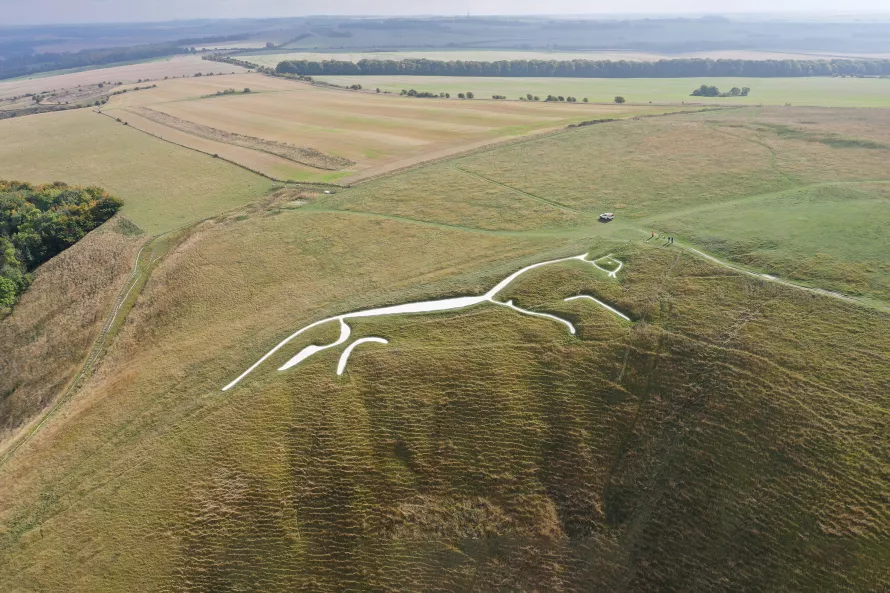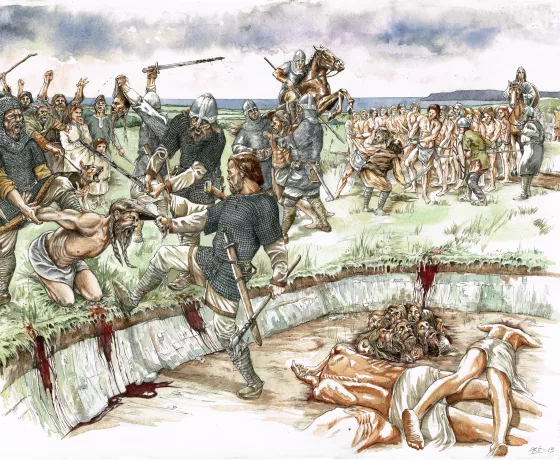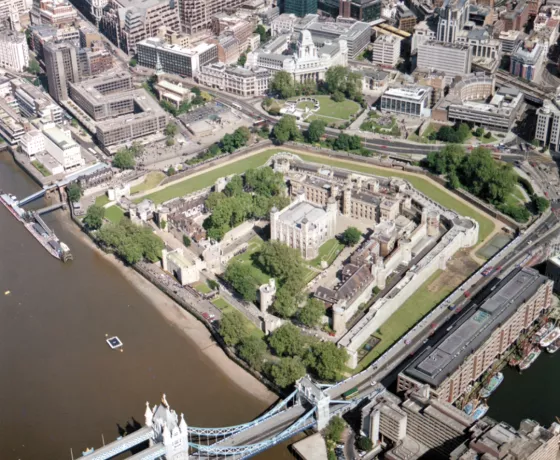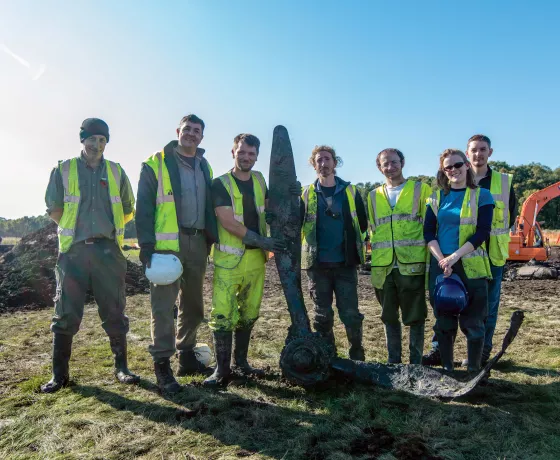With our April highlights we travelled to Corby, Northamptonshire, for a Roman site that won Current Archaeology's Rescue Project of the Year in 2022. From there, we visited the Early Medieval monastic site of Dacre, Cumbria, andits connection to the first king of England, Aethelstan, and the legendary Battle of Brunanburh, recently brought to the screen in Seven Kings Must Die, the last instalment of The Last Kingdom. We then climbed up the hill of the Uffington White Horse, the well-known Bronze Age chalk figure with which OA has a long association. And finally, to mark ANZAC Day, we remembered those who fought at the Battle of Fromelles in 1916.
A rare mausoleum turned into a manufactruing centre
The exploration of a Roman temple-mausoleum and its subsequent transformation into one of the largest tile manufactories from Roman Britain by OA, uncovered at Priors Hall, Corby, represent one of the most exciting and valuable discoveries from Roman Britain in recent years.
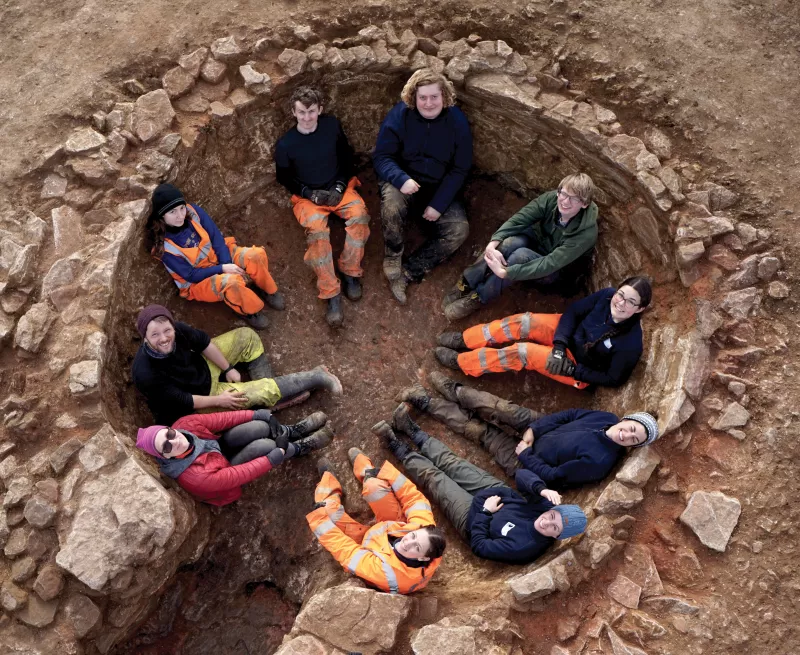
The dichotomy of a building focused on sacred dialogue converted into a burgeoning centre of ceramic production has opened up countless avenues of interpretation on what Roman villas were for and how they worked. We are able explore the history of a single Roman villa estate throughout its history by exploring the experiences of the often-invisible people who made it work: its tilers, carpenters, builders, lime makers and potters who actually transformed the small archipelago of Britain into the Roman province of Britannia.
The works were undertaken as part of a large housing development for Urban&Civic during 2019-2021 for over 5000 new homes and dozens of new communities. The Roman history of the site will now be woven into the fabric of these new communities, and they will continue the story of this rare and wonderful place.
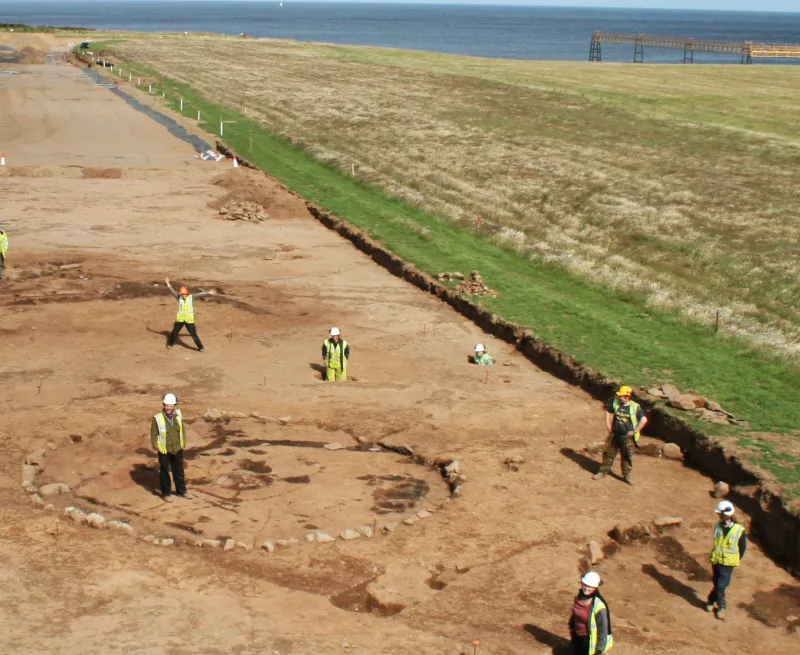
A key site for early medieval history
If you, like quite a few of us at OA, have been following the advenbture of The Last Kingdom's Uhtred over the last few years, you will know that today the film "Seven Kings must die" is out, the final instalment of the series based on Bernard Cornwell's book series. As we bid our farewell to Uhtred, we look back to the 1980s excavations that OA's Lancaster office (when it was still the Lancaster University Archaeological Unit) carried out at the ecclesiastical site of Dacre, Cumbria.
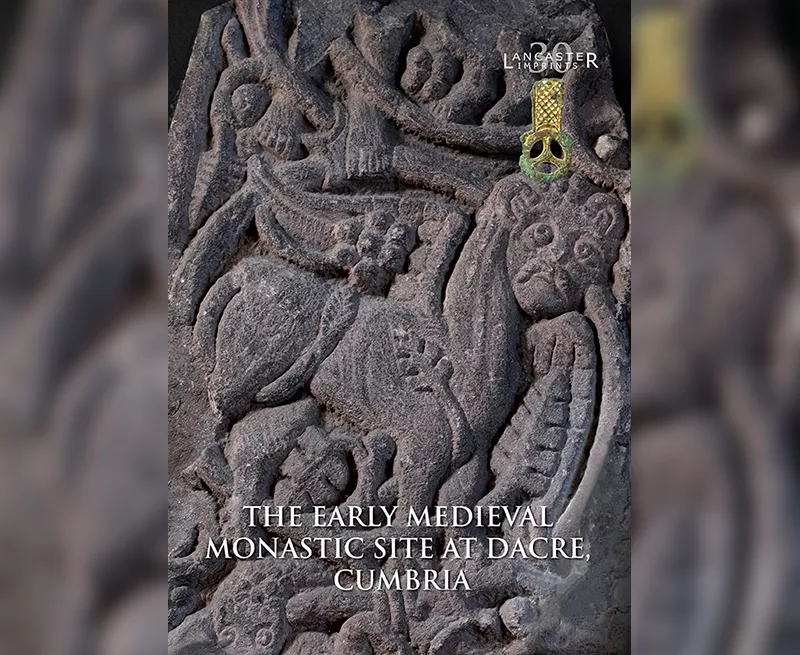
What do Dacre and The Last Kingdom have to do with one another? William of Malmesbury, the foremost English historian of the 12th century, wrote about a great meeting in 927 between the leaders of the English, Scots, and Welsh took place at Dacre. This involved King Aethelstan, the Northumbrian Lord of Bamburgh, and Constantine, King of the Scots, whose son was apparently baptised ‘at the sacred font’. On its own, this claim might seem a little fanciful, particularly given the source was written 200 years after the events. However, the Anglo-Saxon Chronicle, contemporary with the events, also records this meeting in 927, saying that it took place ‘aet Aemotum’, or the river Eamont, which flows just 1 mile from Dacre.
The excavations at Dacre in 1982-5 revealed a wealth of early medieval archaeological remains, including numerous graves, as well as several structures, and interesting artefacts including iron coffin fittings, window and vessel glass, and high-status metalwork; including a stylus, important evidence for literacy. The Venerable Bede recorded that there was a monastery at Dacre by the early 8th century. It is highly likely that an important ecclesiastical site such as this would be involved in important international events in the area, given both the importance of the church and this baptism, and the scribal skills of the monks for recording and documenting the events.
Sadly, the attempts to keep the peace at the great meeting in 927 were not to last long. In 934 Aethelstan invaded Scotland after an alleged violation of the peace treaty by Constantine and this ultimately led to the Battle of Brunanburh in 937. As portrayed in "Seven Kings must die", the Battle of Brunanburh (Brumby in some versions) is considered the moment when a unified England was born. While, sadly, we have no record of an Uhtred Uhtredson at any of these events, nothing prevents us from filling in the gaps left by the chronicles in our imagination.
A shrinking horse
Uffington White Horse is the oldest known chalk figure in the UK. Since the Bronze Age it has held a fascination for many and forms part of a wider landscape sitting within the myth and legend soaked downlands of the Vale of the White Horse, on the borderlands between Oxfordshire and Berkshire. At over half a furlong long its prominence has attracted interest and subsequent activity associated with it since time immemorial.
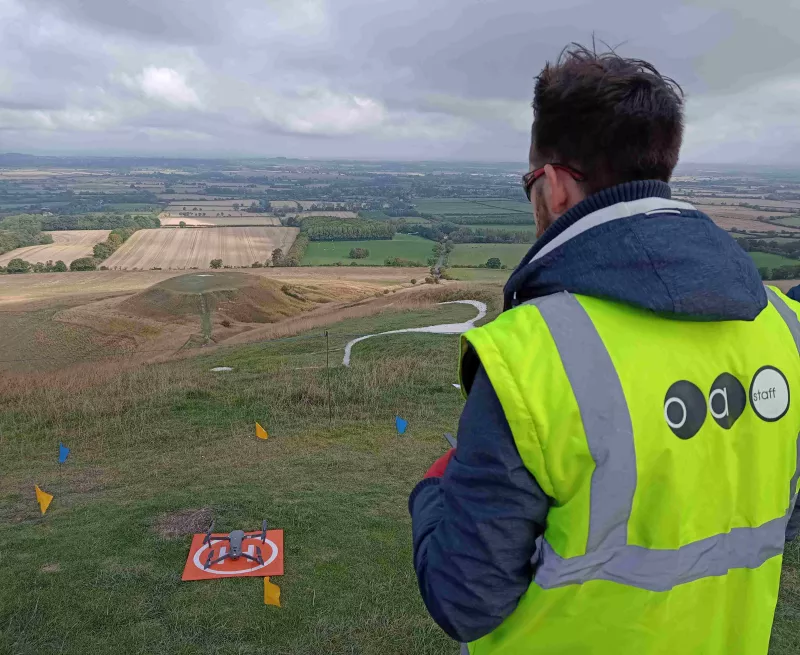
OA has a long history of involvement with Uffington and we were recently commissioned to conduct a drone survey of the White Horse, a project involving three generations of OA archaeologists!
The ‘elder statesmen’ of the project were our recently retired Chief Finance Officer, Simon Palmer and former CEO David Miles, both involved with the 1989-95 OA excavation and other archaeological investigations and acting as a facilitators to this stage of works. The manager of this survey was OAS Head of Geomatics Matt Bradley whose previous involvement was with the 2005 landscape survey of White Horse Hill and its immediate vicinity commissioned by the National Trust. The baton was being passed on to the next generation represented by Ben Brown, our OAS drone pilot, assisted by Adam Rapiejko on a geomatics placement.
Our survey created a detailed model of the horse to compare with previous surveys and aerial photos to see how, and if, the horse had changed since it the start of systematically recording it. It also provided a baseline to monitor the horse in the future using a reproducible and fully documented methodology as a management tool. In the future this will also reduce the variables of comparing data from surveys conducted many years apart with widely differing techniques. We compared our data to previous surveys, particularly Flinders Petrie’s 1926 survey and the 1937 survey conducted by the Ministry of Works, and we did indeed find there had been changes in the shape of the horse as it had evolved over time.
The next decision will be to agree a balanced approach to the future maintenance of the figure, and we hope to revisit the site to monitor the horse and potentially expand the survey to the wider landscape.
Remembering Fromelles on ANZAC Day
The excavation and recovery of mass graves for Allied soldiers killed during the Battle of Fromelles (1916) was a project that took place in 2009 and was overseen by the Commonwealth War Graves Commission (CWGC), as part of a joint Australian and British government mission to identify the soldiers and re-bury them in a new CWGC cemetery in Fromelles, and to inform their families.
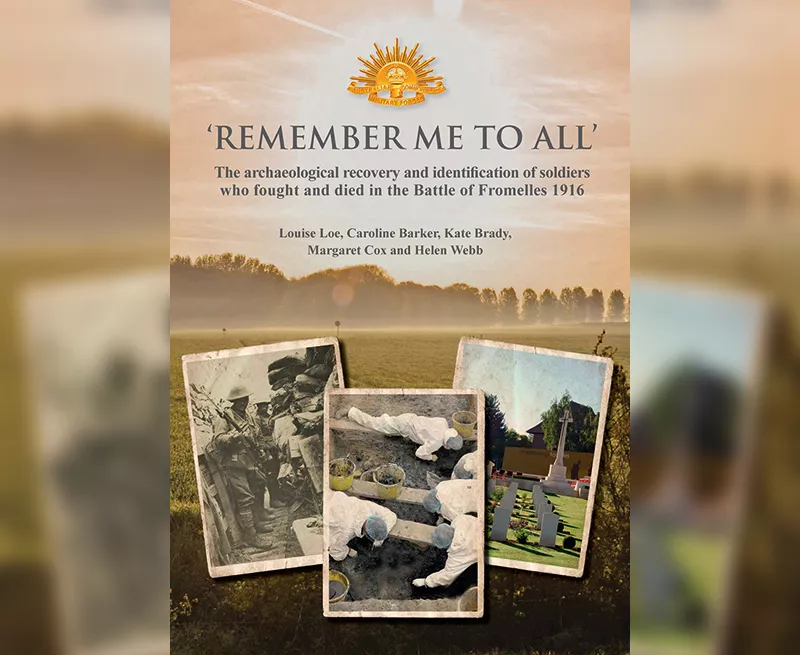
Bringing together an international team of forensic and investigative professionals, a total of 250 soldiers and some 6,000 associated artefacts were recovered and examined from the graves. An unused return train ticket from Freemantle to Perth, which had been tucked inside a gas mask, and a lock of hair, contained within a leather heart, are among some of the most poignant discoveries and are powerful reminders of the realities of the lives of the soldiers. The information obtained from these, other artefacts and skeletons, along side DNA and historical evidence, has resulted in 167 of the soldiers, all Australian, having their identities restored, far exceeding initial expectations when the project was first conceived, around 2005.
Fromelles is the largest recovery and identification operation of First World War soldiers ever undertaken using modern science. With just six months to excavate and analyse the graves, and operating under intense media scrutiny, several innovative techniques were devised to meet the unique requirements of this project. A special site compound was designed that facilitated continuity between excavation, recovery and analysis and allowed a fully integrated approach between recovery and analysis. A software programme was developed to help interpret commingled remains, and a ‘chain of custody’ approach meant that human remains and associated artefacts had to be signed for whenever they were moved. In these respects, the project broke new ground and has arguably become the ‘gold standard’ for projects of this nature.
Following the completion of the site operation, in early 2010, the findings were considered alongside DNA and historical evidence by subject matter experts, including a representative from OA, for an Identification Board. This was undertaken at Australia House, London, and, apart for 2015, took place annually until 2019. Subsequently, efforts to identify the remaining soldiers passed to Australian specialists, under their Unrecovered War Casualties division.
Thirteen years has passed since OA’s field operation took place in Fromelles. For all of those involved it has been a profoundly humbling experience and an immense honour to be entrusted with such a significant undertaking. OA is incredibly proud of being part of a team that has delivered such a successful outcome. Fromelles is one of OA’s most important and rewarding projects that the company has ever undertaken in its 50 years of service.
As Australia and New Zealand observe a national day of commemoration for victims of war and for recognition of the role of their armed forces on 25th April (ANZAC Day), Oxford Archaeology pays particular thought to the soldiers, Australian and British, who fought and died in the battle of Fromelles.
Other posts in this collection
Read the latest posts celebrating our 50th year in archaeology.

